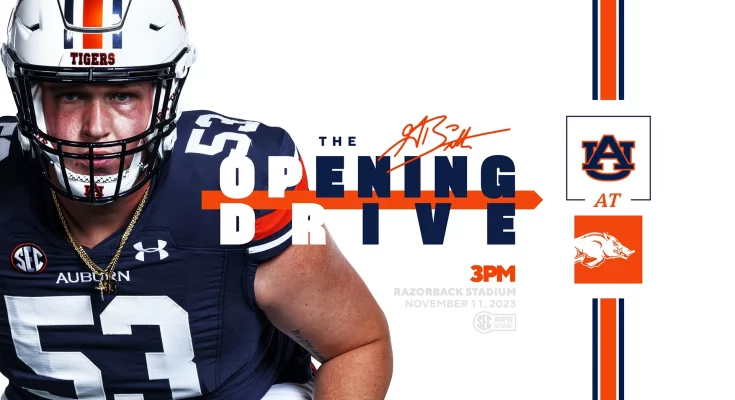In college football, where the margin for victory can be a single point, the role of a reliable kicker is often the silent difference between a team making a deep playoff run or falling just short. These athletes, typically not the stars of highlight reels or campus posters, find themselves thrust into the spotlight at the most pressure-filled moments of a game. Their position is paradoxical—rarely celebrated unless their presence is needed to save the day, and often scapegoated when a single miss shifts the outcome of months of effort. Yet, in recent years, the evolution of the kicker position has been as important as any schematic change on the field.
While quarterbacks, running backs, and defensive stars steal headlines, kickers have become essential to championship aspirations, especially in tightly contested conferences where the difference between elite and good often lies in the special teams. A 52-yard field goal as time expires doesn’t just win games; it validates recruiting, cements coaching decisions, and alters playoff landscapes. Still, despite the increasing value of consistent kicking, many programs treat the position as an afterthought until disaster strikes.
This contradiction often emerges in recruiting. Top-tier programs allocate significant resources to attract 4-star and 5-star recruits for skill positions, while the kicker spot is usually filled through preferred walk-ons or late scholarship offers. This discrepancy can be catastrophic. A program like Georgia or Alabama may lose a playoff game not because of a breakdown in scheme or effort, but because a redshirt freshman kicker missed a makeable attempt under the bright lights of a national semifinal. These moments echo across entire seasons, if not multiple years.
Mental toughness defines successful kickers. Unlike other players who get into a rhythm with reps throughout the game, kickers might sit for 45 minutes before being asked to be perfect with one shot. It’s a job where confidence and routine collide. The great ones—Robbie Gould at Penn State, Evan McPherson at Florida, and Harrison Butker at Georgia Tech—were not just technically proficient. They had unshakable belief in their preparation. Most fans remember the kicks that won or lost games, but the internal grind—the hours of repetition, wind sprints, and film review—remains hidden from public view.
Coaching staffs today are beginning to understand this dynamic better. Special teams coordinators now play an elevated role in game planning, not only focusing on return schemes and punt blocks, but tailoring in-game scenarios that prepare kickers for high-stakes moments. Many programs now employ sports psychologists or mental performance coaches specifically to work with special teams units. The kicker must feel like a vital part of the team, not an afterthought. When that trust is cultivated, the results often speak for themselves.
The 2024 season illustrated this vividly. In the Big Ten, Michigan State dropped two games by a combined three points—both on missed field goals. In contrast, Oregon State won three games on last-second kicks, turning a 7-5 season into a 10-2 campaign and a Fiesta Bowl appearance. Those outcomes were not accidents. Oregon State had invested in developing a reliable junior kicker with over 300 game-day reps under his belt, while Michigan State cycled through three different kickers due to inconsistency. The impact was tangible, not theoretical.
The SEC, known for its brutal defenses and passionate fanbases, perhaps best exemplifies the high-stakes kicker dilemma. In a conference where games are often won in the trenches, the outcome still frequently rests on a 40-yard attempt into swirling November wind. LSU’s 2023 loss to Florida came after two blocked field goals and a late 38-yard miss, erasing what had been a dominant offensive performance. Florida’s head coach afterward pointed to the decision to carry three scholarship specialists as crucial to their game prep, subtly highlighting that investing in special teams had paid off. It’s these margin moves that distinguish perennial contenders from those merely hoping to get lucky.
Kickers also play a critical psychological role on a team. When a squad trusts its kicker to hit from 50 yards, play-calling changes. Coaches can be more aggressive on third down, knowing they don’t need to risk it all to get within 35 yards. This frees up the offense and gives coordinators tactical flexibility. Conversely, teams without that trust often get conservative, trying to force fourth-down conversions or punting from the 35-yard line. Those decisions ripple across a game’s rhythm and scoreboard.
It’s also worth noting how weather and stadium conditions affect college kickers more than in the pros. NFL stadiums are generally better maintained, with more consistent turf, and fewer external environmental variables. In college football, a kicker might go from kicking in 80-degree heat in Gainesville to a freezing windstorm in Madison within a few weeks. Not all kickers can adapt equally. This requires not only leg strength and accuracy but also composure and adaptability. The ones who succeed become legends. The ones who don’t are often forgotten or, worse, remembered only for one tragic miss.
The transfer portal has changed the kicker landscape significantly as well. In the past, a missed kick in a high-pressure moment might result in a benching, but the player would stay with the program and develop. Now, kickers move between programs with greater ease, creating both opportunities and instability. For programs, this means that talent can be bought, in essence, but chemistry cannot. A kicker who thrived in a different program might not gel with a new holder, snapper, or special teams coach. The nuances of timing, rhythm, and feel can’t be overstated.
Name, image, and likeness (NIL) deals have also reached kickers in select programs. While not as lucrative as quarterbacks or star wideouts, high-performing kickers in major markets or with viral moments have attracted sponsorships. This creates a new layer of pressure, as young athletes now balance commercial expectations with on-field precision. Some have embraced it; others have struggled with the spotlight.
The story of James McClintock, a kicker from Appalachian State, encapsulates this new world. After a 2022 season where he hit three game-winners, McClintock signed a regional NIL deal with a chain of auto repair shops. With the sponsorship came media attention, commercials, and community events. When he missed two kicks in a crucial 2023 game against Coastal Carolina, fans turned quickly. His social media blew up with both support and hate. The mental toll was evident, and McClintock stepped away from the team for a brief period before returning stronger. By 2024, he had not only regained his form but became an advocate for mental health awareness in college athletes, particularly those in high-pressure specialist roles. His story was about far more than football—it was about resilience, identity, and the burden of expectation.
Coaches around the country took notice. His case became a teaching point in coaching clinics. Don’t just train the leg—train the mind. Develop rituals. Build mental resilience into practice routines. Create game-like pressure situations on Tuesdays, not just Saturdays. These philosophies started to spread. Some schools even began cross-training other players to handle emergency kicking duties, acknowledging just how crucial the position is when all else fails.
College football, ever a reflection of broader social and competitive changes, is in the midst of a reevaluation of what winning really requires. The rise of analytics has further brought kickers into the discussion. Metrics like expected points added (EPA) per field goal attempt or kickoff return yardage differential have made special teams a measurable part of a team’s identity. Data-backed coaching now means that a missed 42-yard field goal isn’t just chalked up to “bad luck.” It’s a red flag in a program’s efficiency.
Beyond the numbers, though, lies the human story of the college kicker—the isolation, the preparation, the internal battles. These athletes operate in the loneliest job on the field. While quarterbacks can throw interceptions and get another shot next drive, a kicker who misses in the final seconds might not get another chance all season. Their failures are magnified, their triumphs fleeting. Yet time and again, games are placed in their hands.
The fans often overlook them until they’re needed. The broadcasters might only know their name because of a game-winning kick. Yet in those ten seconds when the game rides on their foot, the kicker becomes the entire team’s hope. No blocks, no blitzes, no broken tackles—just one swing of the leg.
That pressure is not for everyone. But for those who embrace it, who can clear their mind, adjust for the wind, trust their mechanics, and execute in the most intense moments, glory awaits. These kickers, often anonymous to the casual fan, are the heartbeat of championship aspirations. And as the 2025 season looms, one thing is certain: at least a few of the year’s most dramatic, season-defining plays will come not from a Heisman finalist or a dominant defensive end, but from the calm, focused, and remarkably clutch leg of a college kicker.



